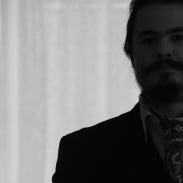Rioting (mainly) for fun & profit
My friend Charles Lehmann at the Manhattan Institute has a new piece out at City Journal, reminding us we’ve had multiple generations of race riots without learning very much—even though the greatest American social scientist, Ed Banfield, wrote about this problem as early as 1970:
The summer of 2025 has not yet officially begun, but it already looks like another long, hot one. Los Angeles has faced days of anti-ICE protests and rioting, which have spreadto dozens of other cities, provoking clashes with local, state, and federal law enforcement. The burning cars and mask-clad demonstrators are disturbingly reminiscent of the riots for “racial justice” in the summer of 2020 and for “Palestine” in 2024. The cause changes; the personnel and methods remain the same.
We hear the same justifications now that we heard then—that the riots are symptoms of some other problem. Los Angeles mayor Karen Bass, for example, blamed not the rioters but ICE, insisting that “if immigration raids had not happened here, we would not have” rioting. California governor Gavin Newsom, one eye doubtless on 2028, has pinned the blame on Donald Trump—as though the president’s enforcement action incited the disorder.
This style of riot apologetics is hardly new. It was familiar, in fact, to Americans circa 1968, when another “long, hot summer” engulfed the nation’s cities. It was familiar, too, to Harvard political scientist Edward C. Banfield, who dedicated a chapter of his 1970 book The Unheavenly City, an analysis of urban dysfunction, to rebutting it. His provocative explanation of why people riot—“mainly for fun and profit”—provoked outrage then. But it remains insightful and tells us something about today’s disorder.
Read his piece here.
I wrote about Banfield as well last summer:
A recent Washington Monthly report by Robert Kelchen & Marc Novicoff on the pro-Palestine campus protests & encampments put together the data to show a very interesting social fact which we have had to learn or relearn in recent years of “mostly peaceful protests.” They correlate the data to show that encampments especially are a luxury, strange as it may seem, a rare flower that can only grow in the tenderly cultivated soil of the Ivy League & of similarly expensive private institutions that foster the American elite. They also show that there’s no special correlation between such ostensibly political activity & democratic engagement through ROTC or AmeriCorps or Peace Corps or voting.
This very unusual social fact could be stated more generally this way: there seems to be an affinity, perhaps an alliance between the upper class & the lower class against the middle class. Hence the preference for protest over volunteering & the strong correlation between people who decry privilege & people who have what they would call privilege.
This recent turn of events made me think of one of the classics of American social science, Edward Banfield’s The Unheavenly City Revisited (1974), now on its 50th anniversary. This is one of a small number of essays that should be required reading in college courses on government or social studies, because it is both a very good introduction to the problems of policy & public opinion & a statement on the defects of the virtues of middle class America that remains true today.
We need more Banfield studies, Charles & I will start an appreciation society!



